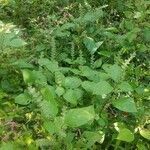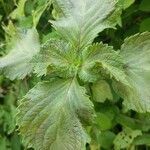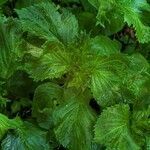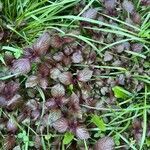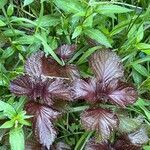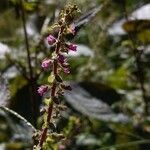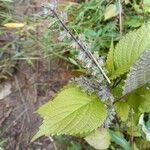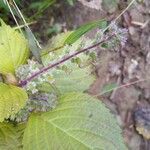An erect herb. It re-grows each year. It grows from 30 cm to 2 m tall. The stems are square. Plants can be green or purple. The leaf stalk is 3-5 cm long. The leaves are oval and 4.5-10 cm long by 2.8-10 cm wide. They are toothed along the edge. Leaves are hairy on both surfaces. The flowers are white. They are in equal stalked flower clusters either in the axils of leaves or at the ends of branches. The fruit is a 1-seeded nutlet. There are a range of cultivated varieties.
Lvs ovate-oblong to broadly ovate, 8–15 cm, short-acuminate, coarsely serrate or incised; infls 5–15 cm, terminal and from the upper axils; bracts oval, folded; pedicels 1–3 mm; cal at anthesis 3 mm, in fr 9–12 mm and hairy within. Native of India, cult. for its ornamental foliage and sometimes used as a condiment, but in larger amounts causing severe pulmonary edema; escaped into waste places and roadsides, Mass. to Io. and Kans., s. to Fla. and Tex. Aug., Sept.
Tallish plant with violet flowers.
